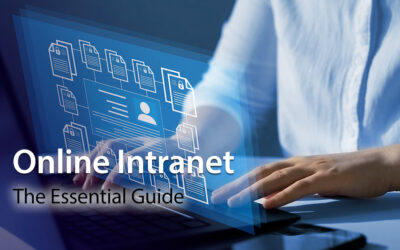Intranet governance may not be the hot topic of conversation around the office coffee machine, but if you are introducing an intranet, it’s a fundamental part of the process that needs to be addressed early on. In fact, many companies have invested large amounts of money in needs analysis and setting up their company portal, without giving sufficient thought to its ongoing management. Not surprisingly, these companies are not getting the most out of their intranets. And in the worst-case scenario, the company portal flounders amid a sea of out-of-date information and disgruntled end users. In this article we look at the basics of intranet governance and what you need to have in place to ensure the intranet reaches its full potential.
 What Is Intranet Governance?
What Is Intranet Governance?
In simple terms, intranet governance is all about the ongoing management of the intranet content, users, structure and purpose. Having a well-defined framework to manage these issues provides clarity and clear rules about who is responsible for what.
Why Do We Need To Consider Intranet Governance?
Without a clear sense of ownership and a strong management structure, the intranet will not function properly. It’s as simple as that. No one will know who is responsible for updating and creating content or setting user permission rights, let alone who is providing an ongoing overview of the portal’s vision and business objectives. A lack of purpose and clarity will soon lead to a situation where the intranet simply becomes an organizational damp squib, rather than the dynamic enabler that it could and should be.
Basics Of Intranet Governance
It’s important that you give thought to how the intranet will be managed at the earliest opportunity – ideally at the needs analysis stage. Often the issues overlap, and so simultaneous consideration is a useful time and resource saver. Below, we identify some fundamental issues that you will need to address within your intranet governance policy.
Vision and Purpose

Roles And Responsibilities
Who in the organization is responsible for generating the copy as well as editing and reviewing content to ensure that it is up to date? You may want to adopt a policy of decentralized content ownership where many people can contribute to and update a file. Alternatively, you may want to restrict this responsibility with centralized content ownership and, say, a named staff member within each department.
However you decide to organize content management, the responsibilities should be clearly defined and advertised throughout the company so that the process is transparent to staff members.
Allied to the management of content is the task of setting site permissions. How will the identification of site permissions and access levels be enacted in your organization? What review mechanisms will be put in place? This is an important aspect of ensuring online security and so careful thought needs to be given to how these processes will work.
Management Of Collaborative Workspaces

- the criteria for setting up and accessing a collaborative workspace
- how to actually go about setting one up
- roles and responsibilities within the project workspace
- how to close a collaborative workspace at the end of a project.
The last thing you want to do is create hundreds of new information silos on your intranet. It’s worth taking the time, therefore, to carefully consider the practicalities of collaborative workspaces.
Sitemap Overview
Keeping a check on where content is posted is important. With continued use, content on the company portal will grow organically and you will want to ensure that the end users’ ability to locate information remains as intuitive as possible.
System Administration
Nuts and bolts issues around who to go to when something goes wrong or when a staff member has a technical issue should be clearly stated.

No One Solution
There is no one-size-fits-all solution to these issues. Each organization will have a different approach, but the main thing is that the topics we have identified are addressed in your intranet governance structure.
In the spirit of collaboration, however, many organizations have found that a cross-departmental approach works best. In this way, all departments have equal representation in the intranet’s ongoing management. And senior management or board level representation will mean that the intranet team has sufficient authority and resources to get the job done. This also has the advantage of helping to ensure that company politics do not come into play as can happen when one department takes the lead.
It’s also worth mentioning that when drafting the guidelines and policies that will accompany the intranet governance framework while it’s important to have those detailed documents to refer to, staff will also need simplified versions. A few simple bullet points covering the key points is more likely to be adopted and used on a daily basis than an overly complicated procedure which will only serve to slow down the whole process.
Intranet governance is, therefore, a very important part of making sure that the company portal is performing as smoothly as possible and to its full potential.
If you are struggling with governance issues and would like to know more, contact the team at MyHub for an informal discussion.


 What Is Intranet Governance?
What Is Intranet Governance? 




0 Comments